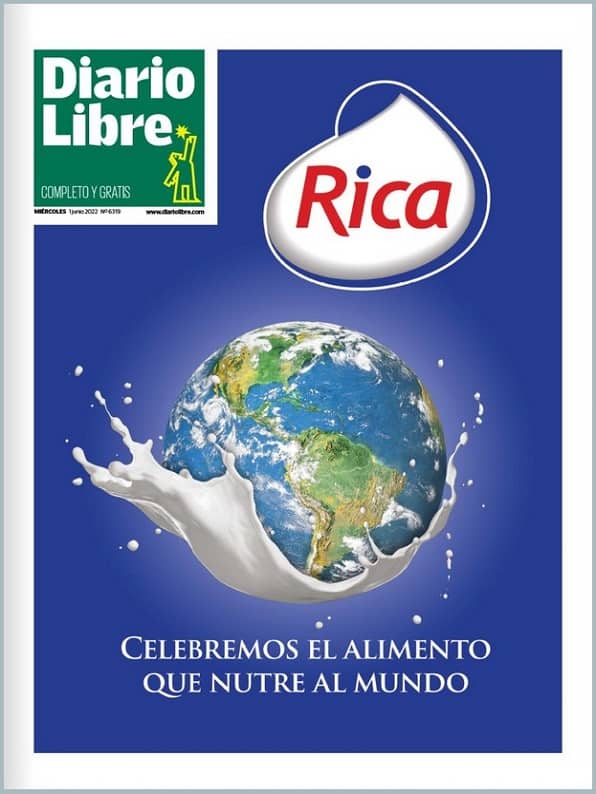"A hurricane which forms and affects the national territory is already a disaster"
January - April, hot months; high temperatures in 2015

SANTO DOMINGO. The director of Onamet reiterated that the hurricane season of 2015 will see little activity. Compared with the first four months "of all the previous years which we have on record," the first four months of 2015 have presented temperatures above the normal values.
This was the description by the director of Onamet, Gloria Ceballos, who gave the example that in the month of April they registered temperatures above 36°C in several areas of the national territory.
"We always expect these temperatures above 35°C in the months of August and September, and to see them in April was for us very unusual and, in fact, this was reflected in all the forest fires which appeared in the various mountain systems," she noted with care.
That the hurricane season of 2015 in the Atlantic is foreseen as being not very active, does not mean to say that the Dominican Republic is exempted from being impacted by a meteorological event of large intensity. "On occasions we have had tropical cyclone seasons with little activity and, nevertheless, one single hurricane which forms and that affects the national territory, is already a disaster for the area where it hits," dictated the director of the National Meteorological Office (Onamet), Gloria Ceballos.
During her participation in the Dialogo Libre, the interview program sponsored by this newspaper, she made it clear that although the first tropical storm (Ana) of the year was formed on 6 May, the hurricane season begins on 1 June, and the perspective is that in the North Atlantic that hurricane season will be below normal.
The engineer explained that what is normal is that in the period of tropical cyclones, there might be 12 named storms. Nonetheless, she said that the University of Colorado said that this year they would be eight storms with names, and the National Oceanic and Atmospheric Administration (NOAA), expects between six and 11 meteorological events.
"All this gives us an idea that the hurricane season will be below normal, since on average, calculated between 1981 and 2010, 12 named storms is a normal season," she added.
The "El Niño" phenomena
The fact that the 2015 hurricane season in the North Atlantic will be less active than normal, has a reason.
"It turns out that we have the El Niño event, which is a heating up of the waters of the equatorial Pacific. Since the end of 2013 these temperatures have been above normal in the equatorial Pacific, and slowly it has been warming up to such a point that the scientists speak of a hot water bottle that is there on top of the Pacific," she explained.
Ceballos noted that the warming of the Pacific causes the Atlantic to cool. Which is to say that, since the waters of the Atlantic are not as hot, as a consequence of the presence of El Niño, the tropical cyclones do not form as expected.
"This is in order that there is a balance, which is to say, while the waters of the Pacific are much warmer, so those of the Atlantic are much colder," explained the Onamet director.
Technicians to detect tsunamis
All this gives us an idea that this is going to be (the tropical cyclone season) below the normal pace, since the average that they calculate in some 12 named storms."
According to Gloria Ceballos, the director of the Onamet, they have between 20 and 30 minutes to alert the population before a tsunami occurs after an earthquake.
It is because of this that according to Ceballos, the institution has a technical team of four oceanographers (there are two in training) that will detect when the level the sea is above normal.
Cloud seeding in the country
The Southwest has registered little rain between January and April 2015
"Since we are a country of coastlines, we don't have this type of clouds (the kind that can be bombarded) very frequently. And another situation, the cloud has to be, that me say it like this: pregnant, and when you inject it with iodine crystals or dry ice, the drops grow, which is to say they adhere to each other and can fall. But if you have a clear sky, where are you going to seed the iodine, where you going to plant the dry ice," the Onamet director questioned.
The director of the National Meteorological Office (Onamet), Gloria Ceballos, assured the reporters at the Dialogo Libre that the Southwest region of the country (the provinces of Barahona, Pedernales, Azua, Bani....) Is the area which has seen the least rains registered between January and April of this year.
"The accumulation of rain has been minimum, minimum to such a point that the difference, which is to say, the difference between the average rain and the rain that has been registered, has been nearly 100%, in some areas at 98% and 99%. Which is to say, this is nothing, oh what would have been around 200 mm," he said. The engineer described the Southwest as the "most depressed area" in the first four months of 2015.
"The Northwest was also involved last year, but now in these last few months there has been an explosion of rain and Monsion, Dajabon, Santiago Rodriguez, Elias Piña, which has mitigated significantly the situation that they were going through some months ago."
This was the description by the director of Onamet, Gloria Ceballos, who gave the example that in the month of April they registered temperatures above 36°C in several areas of the national territory.
"We always expect these temperatures above 35°C in the months of August and September, and to see them in April was for us very unusual and, in fact, this was reflected in all the forest fires which appeared in the various mountain systems," she noted with care.
That the hurricane season of 2015 in the Atlantic is foreseen as being not very active, does not mean to say that the Dominican Republic is exempted from being impacted by a meteorological event of large intensity. "On occasions we have had tropical cyclone seasons with little activity and, nevertheless, one single hurricane which forms and that affects the national territory, is already a disaster for the area where it hits," dictated the director of the National Meteorological Office (Onamet), Gloria Ceballos.
During her participation in the Dialogo Libre, the interview program sponsored by this newspaper, she made it clear that although the first tropical storm (Ana) of the year was formed on 6 May, the hurricane season begins on 1 June, and the perspective is that in the North Atlantic that hurricane season will be below normal.
The engineer explained that what is normal is that in the period of tropical cyclones, there might be 12 named storms. Nonetheless, she said that the University of Colorado said that this year they would be eight storms with names, and the National Oceanic and Atmospheric Administration (NOAA), expects between six and 11 meteorological events.
"All this gives us an idea that the hurricane season will be below normal, since on average, calculated between 1981 and 2010, 12 named storms is a normal season," she added.
The "El Niño" phenomena
The fact that the 2015 hurricane season in the North Atlantic will be less active than normal, has a reason.
"It turns out that we have the El Niño event, which is a heating up of the waters of the equatorial Pacific. Since the end of 2013 these temperatures have been above normal in the equatorial Pacific, and slowly it has been warming up to such a point that the scientists speak of a hot water bottle that is there on top of the Pacific," she explained.
Ceballos noted that the warming of the Pacific causes the Atlantic to cool. Which is to say that, since the waters of the Atlantic are not as hot, as a consequence of the presence of El Niño, the tropical cyclones do not form as expected.
"This is in order that there is a balance, which is to say, while the waters of the Pacific are much warmer, so those of the Atlantic are much colder," explained the Onamet director.
Technicians to detect tsunamis
All this gives us an idea that this is going to be (the tropical cyclone season) below the normal pace, since the average that they calculate in some 12 named storms."
According to Gloria Ceballos, the director of the Onamet, they have between 20 and 30 minutes to alert the population before a tsunami occurs after an earthquake.
It is because of this that according to Ceballos, the institution has a technical team of four oceanographers (there are two in training) that will detect when the level the sea is above normal.
Cloud seeding in the country
The Southwest has registered little rain between January and April 2015
"Since we are a country of coastlines, we don't have this type of clouds (the kind that can be bombarded) very frequently. And another situation, the cloud has to be, that me say it like this: pregnant, and when you inject it with iodine crystals or dry ice, the drops grow, which is to say they adhere to each other and can fall. But if you have a clear sky, where are you going to seed the iodine, where you going to plant the dry ice," the Onamet director questioned.
The director of the National Meteorological Office (Onamet), Gloria Ceballos, assured the reporters at the Dialogo Libre that the Southwest region of the country (the provinces of Barahona, Pedernales, Azua, Bani....) Is the area which has seen the least rains registered between January and April of this year.
"The accumulation of rain has been minimum, minimum to such a point that the difference, which is to say, the difference between the average rain and the rain that has been registered, has been nearly 100%, in some areas at 98% and 99%. Which is to say, this is nothing, oh what would have been around 200 mm," he said. The engineer described the Southwest as the "most depressed area" in the first four months of 2015.
"The Northwest was also involved last year, but now in these last few months there has been an explosion of rain and Monsion, Dajabon, Santiago Rodriguez, Elias Piña, which has mitigated significantly the situation that they were going through some months ago."


 Nikaury Arias
Nikaury Arias
 Nikaury Arias
Nikaury Arias